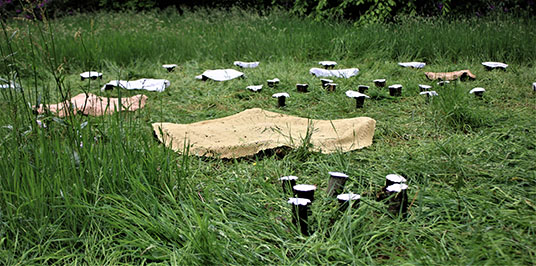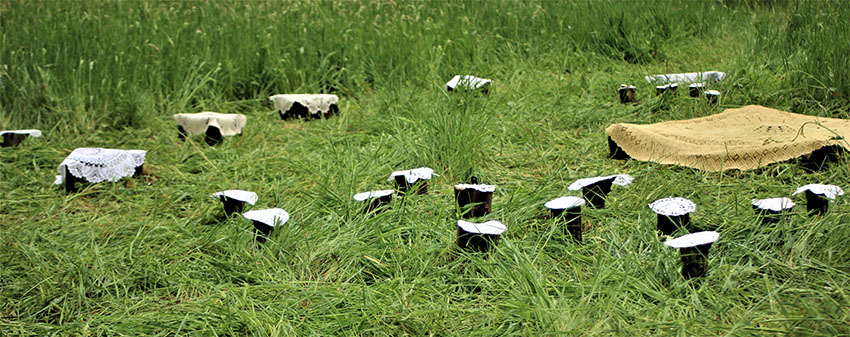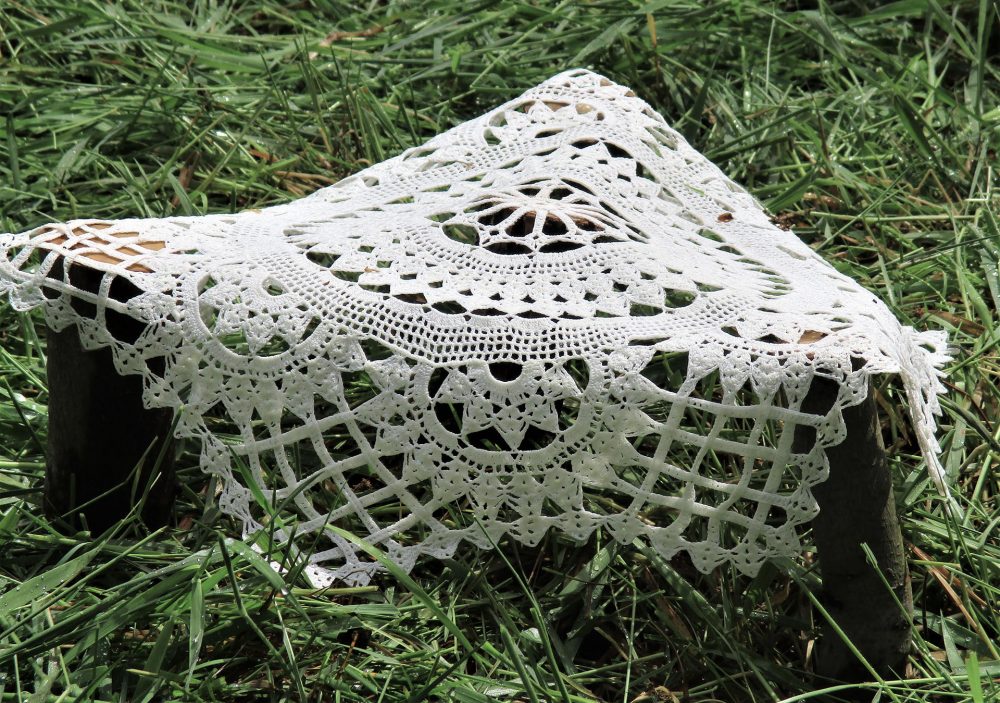Textile Festival Twente, the 1st edition
This series is about commissioning and public space. A situation is always sketched from the perspective of the narrator. This can be an artist and/or a client. We want to sketch a picture of the practice of artists: what goes well, what does an artist encounter when working in public space and how does a commissioner work? Our hope is that everyone can benefit from the information and at the same time get to know and understand the perspective of 'the other' better.

In Twente, eight regional museums* have joined forces and established Stichting Cultuur in Twente. Their first large-scale project has been a reality since this summer: Textile Festival Twente. After all, textiles are the cradle of the Twente identity. The development of the textile industry is deeply rooted in and intertwined with Twente. With Textiel Festival Twente the museums want to show what Twente has to offer in terms of textiles. It is not only something from the past, also today it plays a major role in the region. With the realization of this festival they want to make a connection between the cities and villages with a textile past, but especially between art collectives, special initiatives, innovations and people who are interested in textiles.
The development of the textile industry is deeply rooted in and intertwined with Twente
One of the components of this festival is Catwalk: Forces of Nature and that is what this article is about. It is not a catwalk in the usual sense of the word but one that runs like a textile art route through Twente's coulisse landscape, Twente's Museums and Estates. The catwalk is on view for months at a time, from June to the end of November 2021, and thus cuts across the seasons. This inevitably means that time, nature and the unpredictability of the weather influence the artworks. I spoke with Daniëlla van der Stelt, she works at Het Palthe Huis and was project manager of the festival, and with Ine van Son, one of the participating artists.
The catwalk has a good number of works and is best traveled by bike
For the catwalk artists and designers were challenged to confront the elements in a design that would be displayed outside, at one of the participating museums or at one of the designated country estates. Textiles in the outdoors for a longer period of time, that was what appealed to Ine van Son and that is why she decided to answer the call and submit a proposal. She also liked the fact that she could propose a work from a specific location.

In her proposal she indicated that she wanted to show her work in a place that was not too strictly maintained. Twickel Estate, where she initially had her eye on, has a strict mowing policy, and that did not seem to go together with her work. Eventually she decided on a place near the estate with a less strict green plan. In consultation it turned out that a lot was possible, a quality that Van Son appreciates in a client. Many other artists and designers also saw a challenge in responding to the so-called elements; in total the organization received sixty-five plans for a work of art, says Daniëlla van der Stelt. Of these, fourteen were selected to actually be executed, together with work by students of the textile design department of Saxion University and the fashion course at the ROC. In short, the catwalk has a good number of works and is best traveled by bicycle. Several bicycle routes have been put together.
During the corona measures, this festival offered the opportunity to still show art to a wide audience
Since the artworks were realized on site in June, they have not been actively maintained. This means that on some artworks mosses are now growing, insects are living in them or artworks are slowly decaying. For years, Van Son has been keeping engaged with textiles and is particularly interested in the material and the historical associations it evokes. She made the installation Women's Hands for the route. Women's Hands comes from the memory of her mother and grandmother: "I see their hands working with an extremely thin crochet hook and fine linen or cotton yarn. They were proud of the little rugs that thus emerged from their hands and adorned several highly visible places in the house. Their 'legacy' that they left me consisted of a number of these rugs that they had crocheted with angelic patience." Van Son collected a large number of such rugs, made by mothers and grandmothers, aunts and neighbors. She lifted these rugs one by one and placed them on a 'pedestal'. In this way they start to lead a life of their own and become detached from the table or sideboard for which they were once made.

Van Son is satisfied with the client, even though Culture in Twente, with all its activities and exhibitions, had perhaps become a little too extensive, so that questions were answered rather slowly. On the other hand, from a financial point of view everything was done very correctly and carefully. It's very pleasant if you don't have to follow up on that. Let's face it, that's the way it should be, but practice is obstinate. Van Son speaks from experience.

Culture in Twente also looks back on a successful first edition, says project manager Van der Stelt, it tastes like more. While the cooperating museums were still closed due to coronation measures, this festival offered the opportunity to show art to a broad public. What she does not like to think back to is the permits that she had to arrange for all the works of art. She had to submit applications to twelve municipalities and that went twelve different times. It was more time-consuming than she thought and many municipalities had no idea what was involved in realizing (temporary) art in public spaces, which also caused delays. The app with the cycling routes has now been downloaded 12,000 times, something she had not dared to hope for in advance. Not to mention all the people who happened to cycle past a work of art. In total, there were many thousands of visitors, almost all of whom were enthusiastic. When she thinks about it, that is what motivates her to organize Textiel Festival Twente again in the future.


